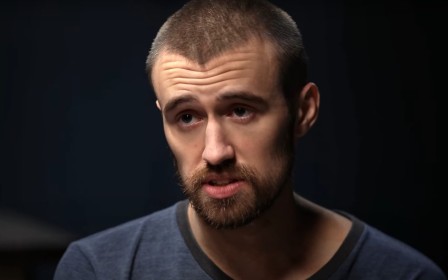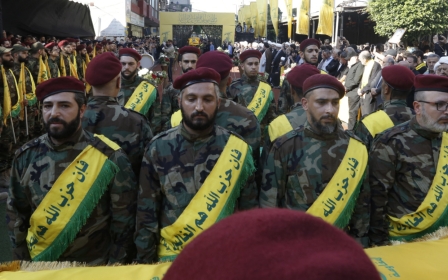Rebels capture key territory as Russian and Syrian jets step up bombing

Russian and Syrian jets stepped up their bombing campaign in northwest Syria on Sunday as rebels continued their push towards Hama on the fifth day of their surprise offensive.
Four air strikes on a university hospital in central Aleppo killed at least five people, including civilians, according to the Syrian Observatory for Human Rights (SOHR), a UK-based monitoring group.
At least eight more people, including two women, a child and a rescue worker, were killed in bombing earlier in central Idlib.
On the ground, rebels led by Hay’at Tahrir al-Sham (HTS) and allied groups, including some backed by Turkey, solidified their takeover of Aleppo, seizing two towns and an airbase in the city’s countryside.
Thousands of fighters had begun marching towards Hama, about 230km south of Aleppo, on Saturday night after reports that government forces had fled their positions.
New MEE newsletter: Jerusalem Dispatch
Sign up to get the latest insights and analysis on Israel-Palestine, alongside Turkey Unpacked and other MEE newsletters
However, SOHR reported that government forces had begun reinforcing their positions around several key cities and villages around Hama on Sunday.
Elsewhere, the Turkey-backed Syrian National Army (SNA) coalition - an ally of HTS - clashed with Kurdish armed groups in Aleppo’s northern countryside.
A Turkish source told Reuters that the SNA had blocked an attempt by Kurdish groups to establish a corridor connecting Tel Rifaat to northeastern Syria.
Syrian President Bashar al-Assad on Sunday vowed to “break terrorism” with the use of force.
The dramatic turn of events in Syria began on Wednesday when rebels broke out of Idlib in a surprise offensive towards Aleppo.
By Saturday, they had seized full control of the governorate of Idlib and most of Aleppo, the country’s second-largest city.
According to SOHR, 372 people have been killed on both sides, including combatants and civilians.
The frontlines of Syria’s civil war have barely shifted since 2020.
A “de-escalation” agreement in 2019 between rebel-backer Turkey and Assad’s sponsors, Russia and Iran, created some stability and a long-term ceasefire.
Most of Idlib province has since been held by HTS, a former al-Qaeda affiliate, which has established a civilian administration. The SNA has held sway in other areas of the north.
However, despite Russia being distracted by the war in Ukraine and Assad’s forces weakened by frequent Israeli attacks, Syrian and Russian warplanes have stepped up air strikes on opposition-held areas since August 2023.
Meanwhile, Assad’s government used the stability to make diplomatic inroads, normalising relations with several regional countries and rejoining the Arab League.
That stability now appears severely undermined. Aleppo became an opposition stronghold after the revolution broke out in 2011 but was recaptured in 2016 after Russian and Iranian intervention, in what was a morale blow to the revolution.
Middle East Eye delivers independent and unrivalled coverage and analysis of the Middle East, North Africa and beyond. To learn more about republishing this content and the associated fees, please fill out this form. More about MEE can be found here.





